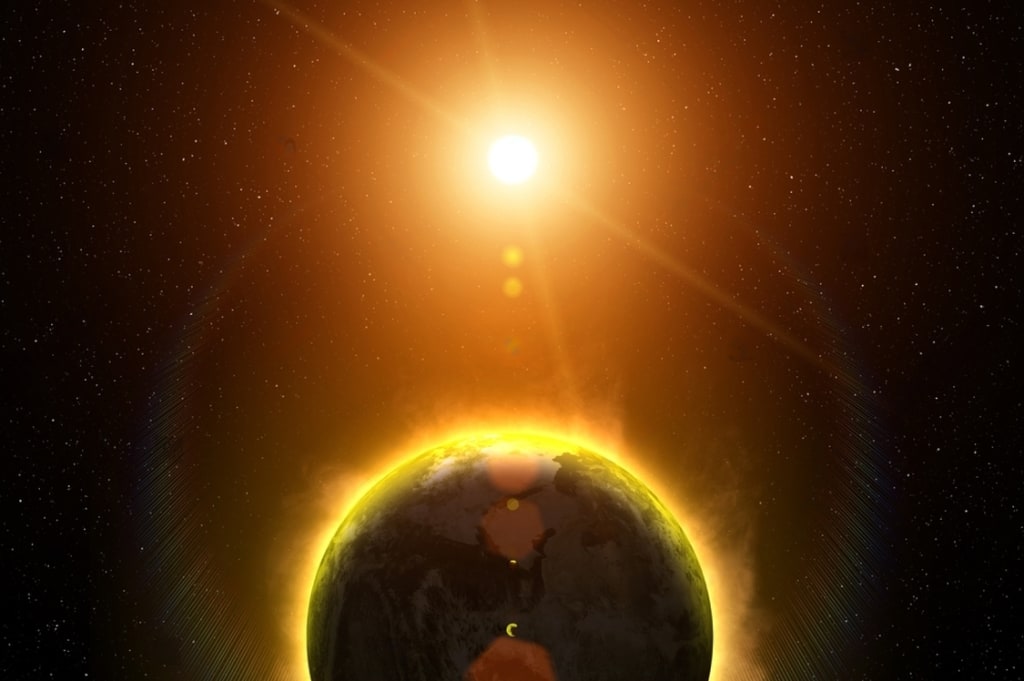
Have you ever wondered what would happen if our sun decided to throw a cosmic tantrum and go boom? Well, buckle up for a journey into the heart of our star, where hydrogen atoms are having the time of their lives in a dance party called nuclear fusion. This process unleashes energy in the form of light and heat, brightening up our solar system.
But let's fast forward to a distant future, about 5 billion years from now. Our sun, like a grand celestial performer, will run out of hydrogen fuel. Cue the red giant phase, where it swells up, swallowing inner planets, Earth included. It then sheds its outer layers, leaving behind a mesmerizing planetary nebula. The core, now filled with helium, starts a new phase, fusing heavier elements until it becomes a compact white dwarf, retiring peacefully.
But what if the sun decided to skip the graceful exit and went boom abruptly? Picture this: a shock wave of energy races through space at the speed of light, taking about 8 minutes to reach us. Earth witnesses an awe-inspiring spectacle, but it's also the end of the show.
The sun expands rapidly, swallowing inner planets and releasing a torrent of supercharged particles, including X-rays and gamma rays. An electromagnetic pulse fries electronic devices, leaving them useless. Earth faces instant vaporization, and chaos ensues in the entire solar system. Even surviving planets get knocked off their orbits, creating cosmic havoc.
Could humanity survive such a cataclysmic event? In short, no. Except for perhaps some resilient bacteria, everything would be wiped out. However, in a fictional scenario where the sun gave us a heads-up, we might have a slim chance. We'd need to find a new home, as Earth and its neighboring planets would vanish.
If, against all odds, Earth somehow survived, the consequences would be dramatic. Extreme temperatures, oceans evaporating, and a rapid transition from scorching heat to icy cold would test our survival skills. Deep underground bunkers might be our refuge, protecting us from radiation and sudden temperature changes for a couple of years.
But here's the catch: without the sun, Earth would drift aimlessly in search of a new center of gravity. Imagine our planet, the moon, and other planets floating away into space. Luckily, our sun is here to stay for a few billion more years, keeping us warm and shining for many cosmic adventures to come.
In the vast canvas of our cosmic neighborhood, the Sun takes center stage, orchestrating a spectacular dance that has been ongoing for billions of years. Let's unravel the secrets of this celestial performer and explore the intricate steps of the cosmic ballet that keep our solar system in harmonious motion.
At the heart of our star, the Sun's core hosts a lively party where hydrogen atoms engage in an energetic dance known as nuclear fusion. In this grand chemistry experiment, hydrogen atoms collide, forming helium atoms and releasing a massive amount of energy. This energy, governed by Einstein's famous equation, E=mc^2, radiates outward in the form of light and heat, illuminating the entire solar system.
To sustain this cosmic fiesta, the Sun's core endures tremendous pressure from the outer layers, maintaining a delicate balance. The energy produced takes a leisurely journey from the core to the surface, bouncing around, absorbed and reemitted by various particles before finally escaping into space as sunlight. This radiant energy warms our planet and makes life on Earth possible.
The Sun, having shed its outer layers, enters a new phase. Its core, in a state of retirement, starts fusing heavier elements like oxygen and carbon, creating a mesmerizing cosmic encore. Eventually, the Sun will become a compact white dwarf, marking the end of its stellar performance.
So, while the sun's boom is a fantastic scenario to explore, for now, let's revel in the beauty of its dance parties and the intricate celestial choreography that keeps our solar system in harmony. Stay tuned for more cosmic what-ifs and keep your curiosity alive!






Comments (1)
I like the way you write